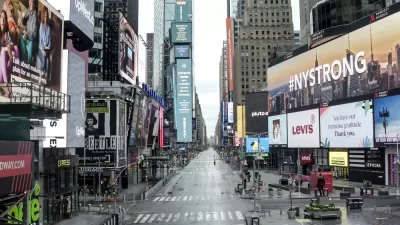After forty years in the statistical doldrums, what does Milwaukee make of a sudden, slight increase in population? Local expert and urban enthusiast Dave Steele reports.
"Milwaukee, like its baseball team, has spent the better part of the last four decades in the statistical doldrums. Population peaked in 1960 at 741,324. Since then, that number has slowly and steadily seeped away. The 2000 Census found the city's population had dipped below 600,000.
So when the US Census released a re-estimate of the city's 2006 population that showed a slight increase from 2000, it was as if the perennially losing team suddenly broke .500. Not quite enough to make the playoffs, but it sure beats being a perpetual cellar-dweller.
Of all the indicators we rely on to gauge the health and vitality of our cities, we put the most stock in population growth or decline. Median incomes, rates of educational attainment, poverty rates, crime rates – these are all important statistics that we can use to assess how well our cities are doing. But if your city is losing population it's hard for most people to argue that things are on the right track. (Although there is growing movement in some Midwestern cities that sees population loss as an opportunity as well as a challenge.)
But like a lot of statistics, demographics are basically estimates. Even the decennial census count is, at best, the most complete and accurate guess we have at the actual makeup of our communities. And the mid-decade estimates are even less reliable-no one believes for a second that there are really 602,782 souls residing in the city of Milwaukee, or that exactly 5,808 have moved in since the decade began.
We tend to fill in the data gaps with what we see with our own eyes. In Downtown Milwaukee, we see new condos left and right, so it stands to reason that the folks inhabiting these residences, the well educated and the professional, are those driving the city's modest population growth. Conveniently, this explanation allows us to tell a new story of Milwaukee: a former industrial powerhouse that's shaken off the rust and entered a new day: new kinds of jobs, a new breed of worker, a new kind of Milwaukeean.
But could there be another explanation for our sudden and unexpected uptick in population?"
Thanks to Dave Steele
FULL STORY: The New Milwaukeeans: Making Sense of Population Growth in the Cream City

Alabama: Trump Terminates Settlements for Black Communities Harmed By Raw Sewage
Trump deemed the landmark civil rights agreement “illegal DEI and environmental justice policy.”

Study: Maui’s Plan to Convert Vacation Rentals to Long-Term Housing Could Cause Nearly $1 Billion Economic Loss
The plan would reduce visitor accommodation by 25% resulting in 1,900 jobs lost.

Planetizen Federal Action Tracker
A weekly monitor of how Trump’s orders and actions are impacting planners and planning in America.

Wind Energy on the Rise Despite Federal Policy Reversal
The Trump administration is revoking federal support for renewable energy, but demand for new projects continues unabated.

Passengers Flock to Caltrain After Electrification
The new electric trains are running faster and more reliably, leading to strong ridership growth on the Bay Area rail system.

Texas Churches Rally Behind ‘Yes in God’s Back Yard’ Legislation
Religious leaders want the state to reduce zoning regulations to streamline leasing church-owned land to housing developers.
Urban Design for Planners 1: Software Tools
This six-course series explores essential urban design concepts using open source software and equips planners with the tools they need to participate fully in the urban design process.
Planning for Universal Design
Learn the tools for implementing Universal Design in planning regulations.
Caltrans
Smith Gee Studio
Institute for Housing and Urban Development Studies (IHS)
City of Grandview
Harvard GSD Executive Education
Toledo-Lucas County Plan Commissions
Salt Lake City
NYU Wagner Graduate School of Public Service





























